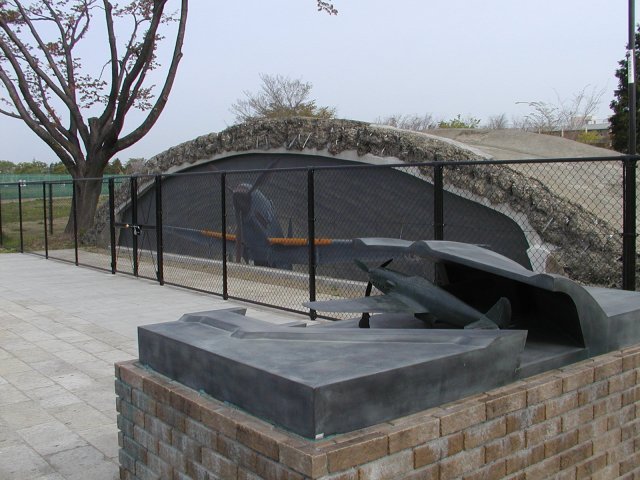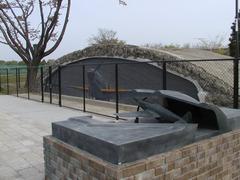
Musashinonomori Park Tokyo: Visiting Hours, Tickets, and Guide to Historical Sites
Date: 14/06/2025
Introduction to Musashinonomori Park
Nestled in the western suburbs of Tokyo, Musashinonomori Park is a vibrant green oasis that harmoniously blends natural beauty, historical depth, and modern recreational amenities. Officially opened in 2000, the 34-hectare park revitalizes part of the historic Musashino Plateau—a region renowned in Japanese literature and art since the Edo period. The park’s name, translating to “Musashino Forest,” reflects its mission of ecological restoration and cultural preservation, offering a tranquil escape from Tokyo’s urban bustle.
Musashinonomori Park gained international attention as the starting point for the cycling road races during the Tokyo 2020 Olympic Games, a legacy commemorated through signage and infrastructure. Strategically located at the junction of Fuchu, Chofu, and Mitaka cities, and adjacent to landmarks such as Chofu Airport and Ajinomoto Stadium, the park is a multifaceted venue integrating sports, nature, and history.
Visitors will find a variety of features: peaceful wooded trails, open lawns for picnics and festivals, historical World War II bunkers, and observation hills overlooking Chofu Airport’s runway. With barrier-free paths and easy access via public transportation, Musashinonomori Park is a vital ecological corridor supporting urban biodiversity, and is especially popular during cherry blossom season and autumn foliage.
This comprehensive guide covers Musashinonomori Park’s visiting hours, tickets, facilities, cultural events, travel tips, and more, ensuring a memorable visit to one of Tokyo’s most cherished green spaces. For official updates, consult the Tokyo Metropolitan Park Association website, Japan Travel, and Go Tokyo.
Table of Contents
- Historical Development of Musashinonomori Park
- Cultural Significance and Community Role
- Architectural and Environmental Features
- Visitor Information: Hours, Tickets, and Travel Tips
- Frequently Asked Questions (FAQ)
- Park Layout and Major Attractions
- Seasonal Activities and Events
- Accessibility and Visitor Amenities
- Tips for a Memorable Visit
- Conclusion and Recommendations
- References
Historical Development of Musashinonomori Park
Musashinonomori Park was inaugurated in 2000 as part of Tokyo’s efforts to expand green spaces and restore ecological corridors in the Musashino region, historically a vast forested plain known as the Musashino Plateau. Heavily referenced in Edo-period literature and art, the area lost much of its original forest to urban development during the 20th century. The park’s establishment represents a deliberate attempt to restore the lost landscape, providing a crucial green lung for Fuchu, Chofu, and Koganei districts. Its role as the starting point for the 2020 Olympic cycling road race elevated its profile internationally (Japan Travel).
Cultural Significance and Community Role
Connection to Musashino’s Heritage
Musashinonomori Park is a living tribute to the Musashino region’s cultural and ecological legacy. The park’s landscape design incorporates native flora and recreates the natural grasslands and forests celebrated in art and poetry. As a green buffer between urban sprawl and remaining natural areas, it preserves biodiversity and supports sustainable urban living (TravelSetu).
Olympic Legacy
Selection as the Olympic cycling road race starting point brought international attention and resulted in upgraded infrastructure, including wide, well-maintained paths and open spaces for events. Proximity to Ajinomoto Stadium and Musashino Forest Sport Plaza cements the park’s status as a hub for sports and recreation (Japan Travel).
Integration with Local Festivals and Traditions
The park regularly hosts seasonal festivals, outdoor concerts, and hanami (cherry blossom viewing) picnics in spring—traditions deeply rooted in Japanese culture. Open spaces accommodate sports tournaments, flea markets, and craft fairs, fostering community spirit and cultural exchange (KaguAruoo).
Architectural and Environmental Features
Landscape Design and Restoration
Musashinonomori Park’s 34 hectares blend open lawns, wooded areas, and water features. The design emphasizes native plant species—zelkova, cherry, and oak trees—supporting urban biodiversity and mitigating the heat island effect. Wetlands and restored vegetation improve air and water quality (TravelSetu).
Accessibility and Connectivity
Accessible from Tama Station (Seibu Tamagawa Line, five-minute walk to the north area) and Nishi Chofu Station (Keio Line, 15-minute walk to the south area), the park features barrier-free paths and facilities for all ages and abilities. It links to other green spaces, including Koganei Park and the Edo-Tokyo Open Air Architectural Museum (Japan Travel).
Visitor Information: Hours, Tickets, and Travel Tips
- Opening Hours: Generally open daily from 6:00 AM to 7:00 PM (hours may extend in spring and summer; some sections open as early as 5:00 AM and close as late as 9:00 PM—check the official website for updates).
- Admission: Free entry; no tickets or reservations required.
- Best Time to Visit: Cherry blossom season (late March to early April) and autumn foliage (late October to early December).
- Getting There: Accessible via Tama Station (Seibu Tamagawa Line) and Nishi Chofu Station (Keio Line). Bus services link nearby neighborhoods.
- Parking: Limited spaces available; use public transport during peak periods.
- Accessibility: Barrier-free paths, accessible restrooms, and family-friendly facilities.
- Nearby Attractions: Koganei Park, Edo-Tokyo Open Air Architectural Museum, Musashino Forest Sport Plaza, Ajinomoto Stadium.
Frequently Asked Questions (FAQ)
Q: Are there any entrance fees?
A: No, entry is free.
Q: What are the visiting hours?
A: Typically 6:00 AM–7:00 PM (seasonal variations possible).
Q: Is the park accessible by public transportation?
A: Yes, via Tama Station (Seibu Tamagawa Line) and Nishi Chofu Station (Keio Line).
Q: Are pets allowed?
A: Yes, pets must be kept on a leash.
Q: Can I rent bicycles in the park?
A: No rentals inside the park, but nearby shops offer bikes.
Q: Are there facilities for visitors with disabilities?
A: Yes, including barrier-free paths and restrooms.
Park Layout and Major Attractions
North Area
- Grassy Plaza and Observation Hill: Open lawns for picnics and a hill with panoramic views of Chofu Airport’s runway.
- WWII Bunker: Preserved historical site near the northeastern edge.
- Walking and Cycling Paths: Trails through wooded areas.
South Area
- Sports Facilities: Soccer, baseball, and tennis courts.
- Open Spaces: Ideal for jogging, group fitness, and gatherings.
Shared Features
- Restrooms and Drinking Fountains: Clean and accessible.
- Playgrounds: Safe and modern for children.
- Picnic Areas: Benches and shaded spots.
- Dog-Friendly Zones: Pets welcome on leashes.
Seasonal Activities and Events
- Cherry Blossom Viewing (Hanami): Late March to early April (Live Japan).
- Autumn Foliage: Late October to early December.
- Community Events: Seasonal fairs, sports tournaments, and outdoor concerts.
- Birdwatching and Nature Observation: Rich biodiversity year-round.
Accessibility and Visitor Amenities
- Wheelchair-Friendly: Barrier-free paths and restrooms.
- Signage: Bilingual in Japanese and English.
- Vending Machines: Drinks and snacks available; bring your own food for picnics.
- Parking: Limited; public transportation recommended.
- Park Service Center: Maps, historical exhibits, and information.
Tips for a Memorable Visit
- Arrive early for cherry blossom season or major events.
- Use public transport to avoid parking issues.
- Bring picnic supplies; no large restaurants on site.
- Comfortable shoes and a camera are recommended.
- Barbecues and drones are not permitted without permission.
- Combine your trip with nearby attractions like Ajinomoto Stadium.
Conclusion and Recommendations
Musashinonomori Park beautifully integrates Tokyo’s natural environment, historical legacy, and modern urban life. As a restored green space rooted in the cultural heritage of the Musashino Plateau, it provides a tranquil retreat for families, outdoor enthusiasts, and history buffs. The park’s Olympic legacy, diverse amenities, and rich biodiversity make it an inclusive destination for all ages and abilities. For the latest information, visit the Tokyo Metropolitan Park Association website.
Explore this historic oasis to experience Tokyo’s dynamic blend of nature, culture, and recreation. For curated guides and updates, download the Audiala app and follow us on social media.






























































































































































































































